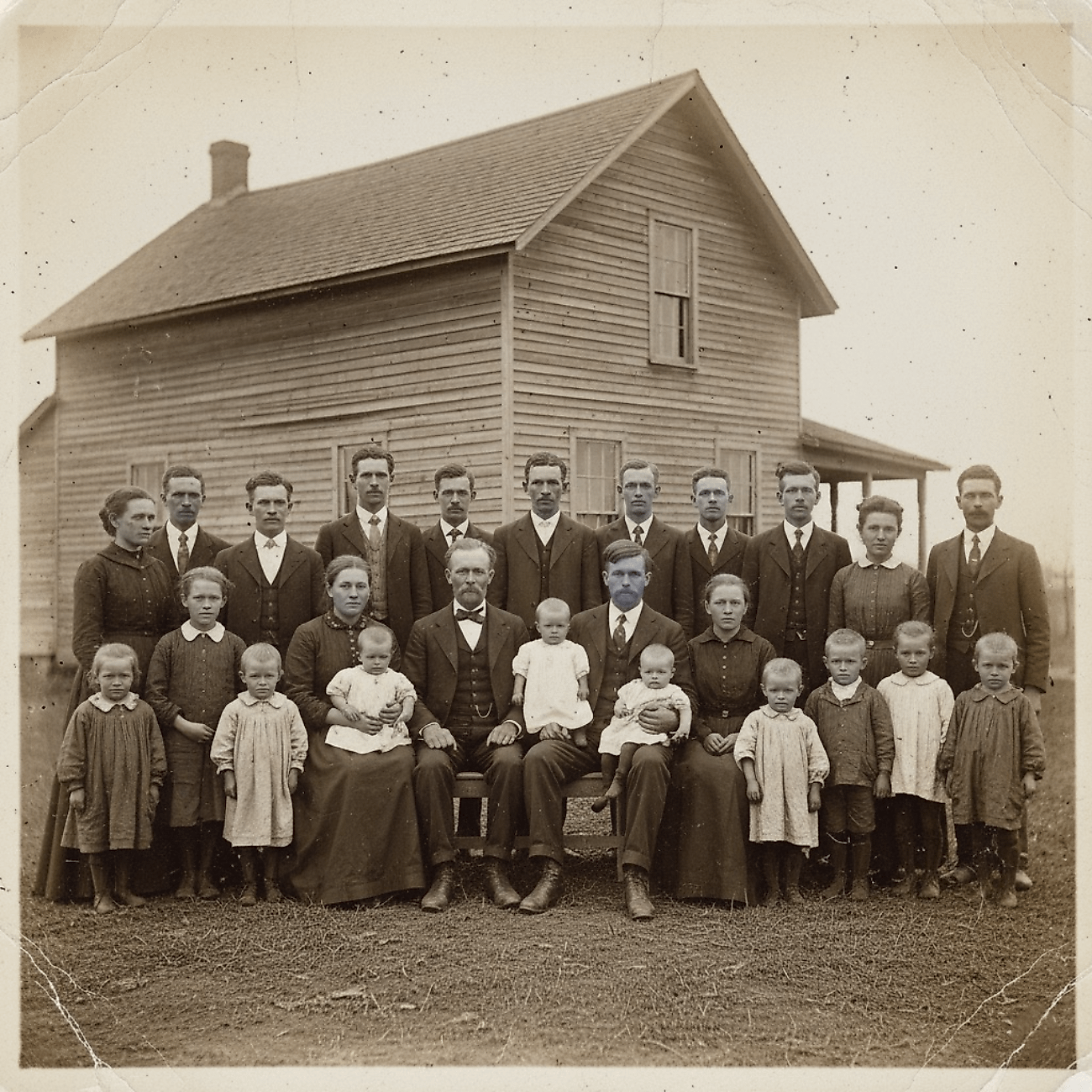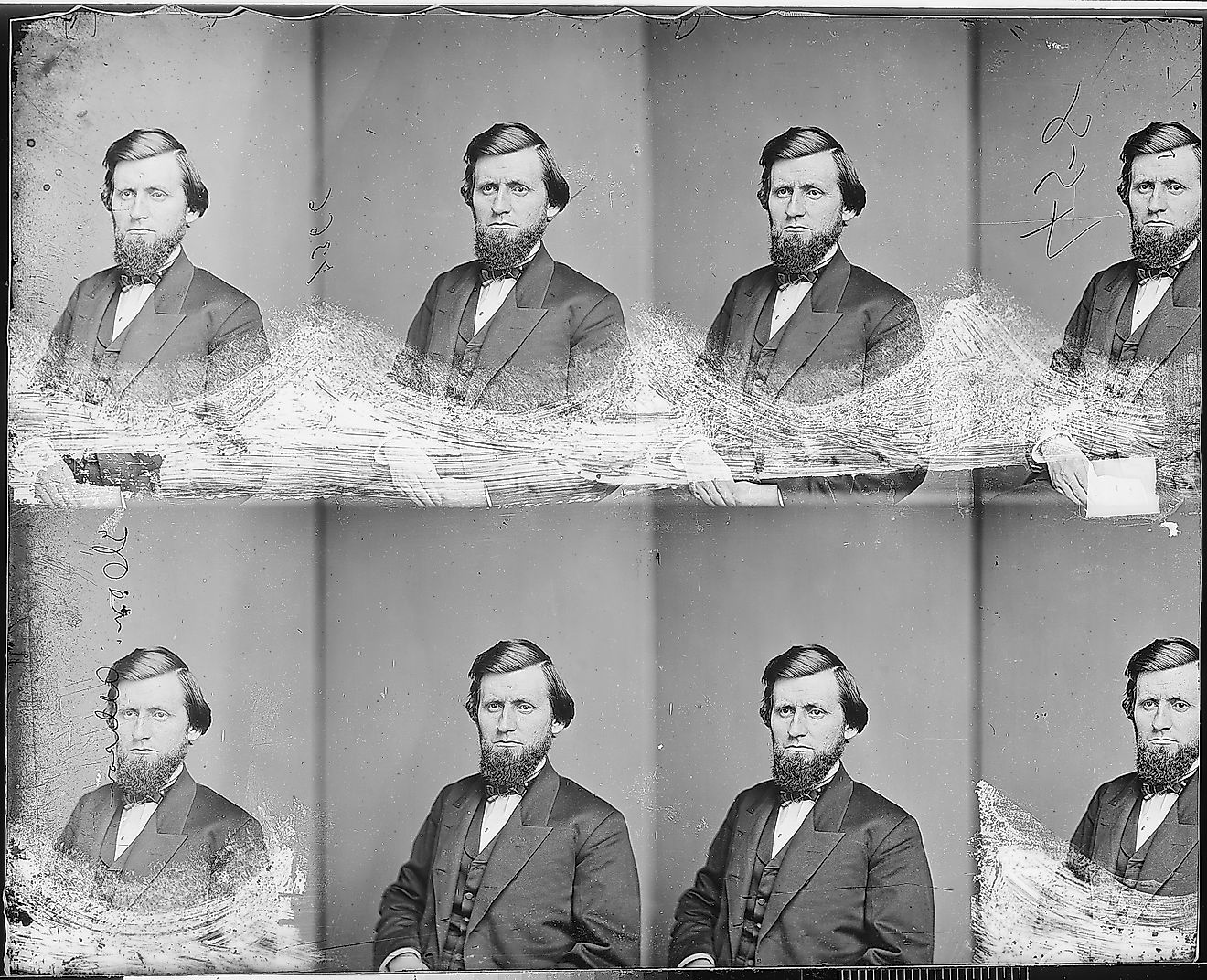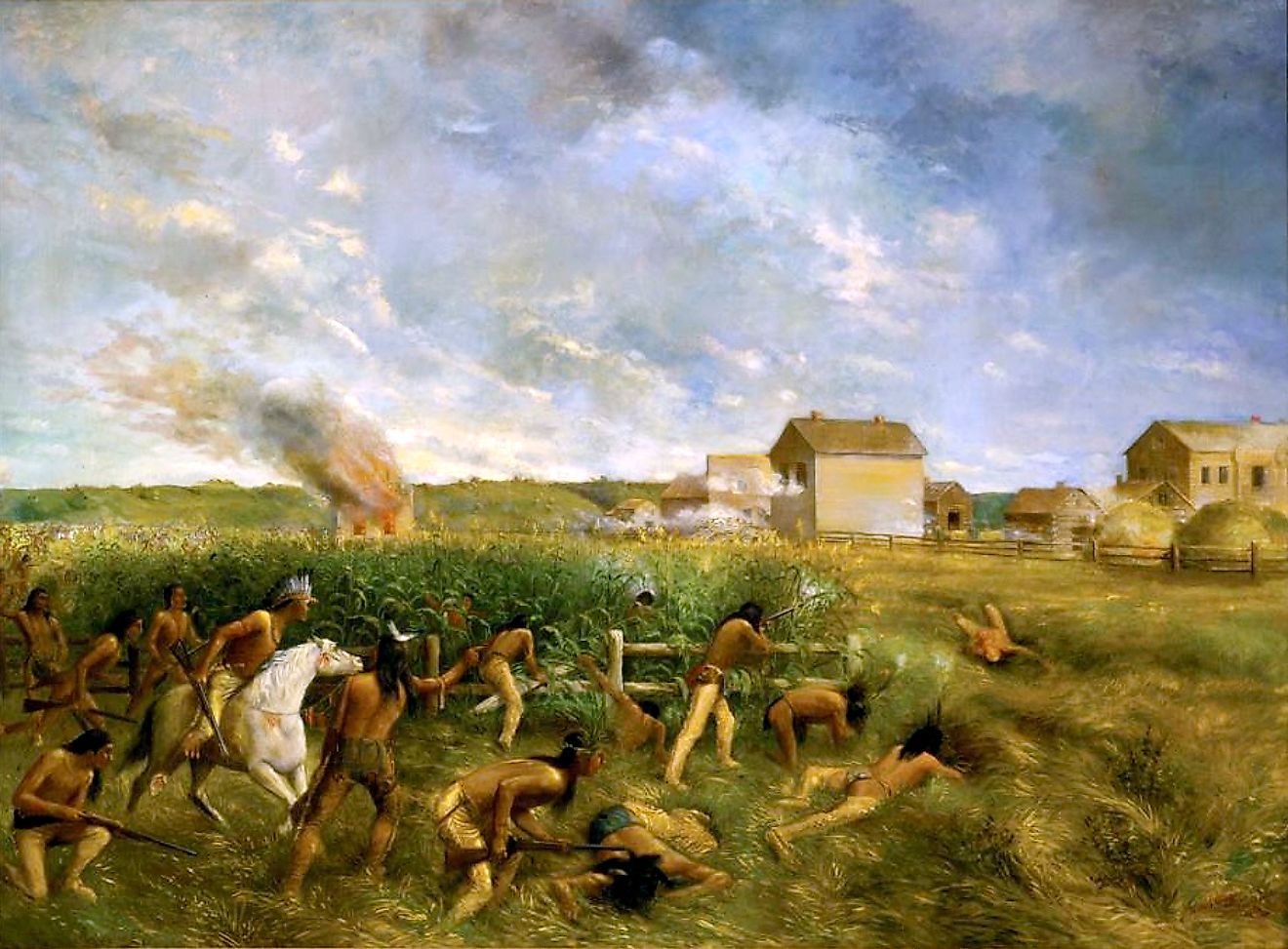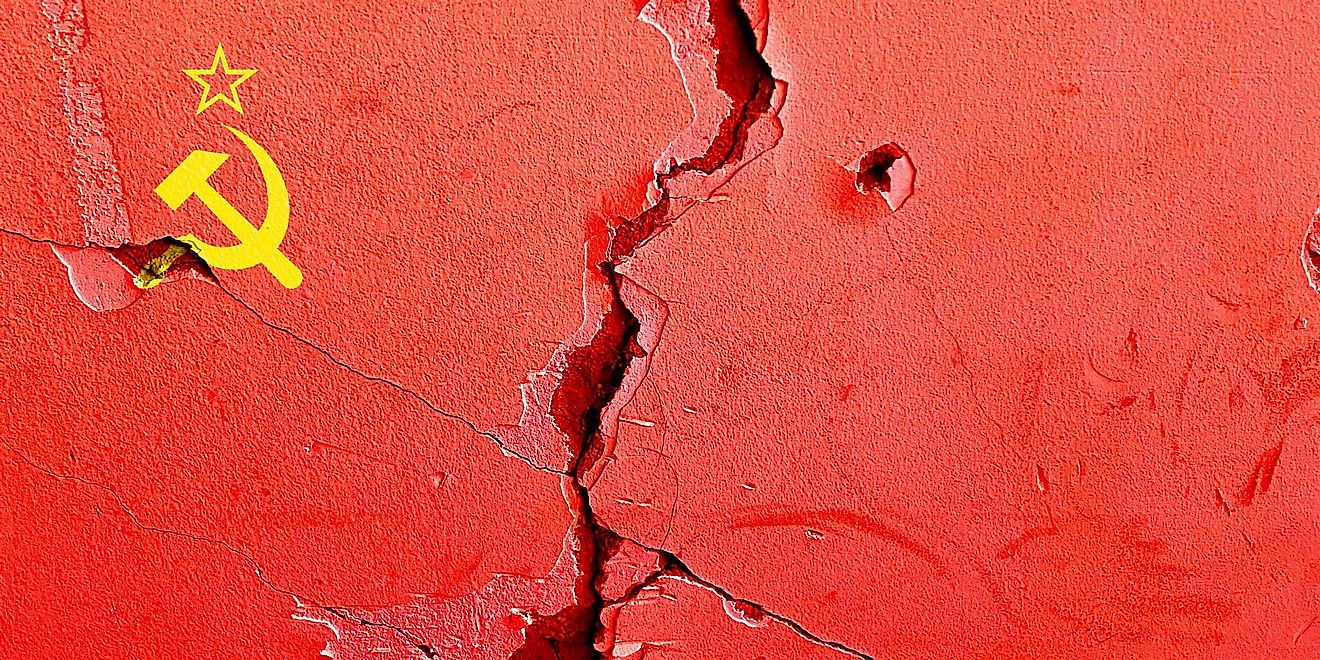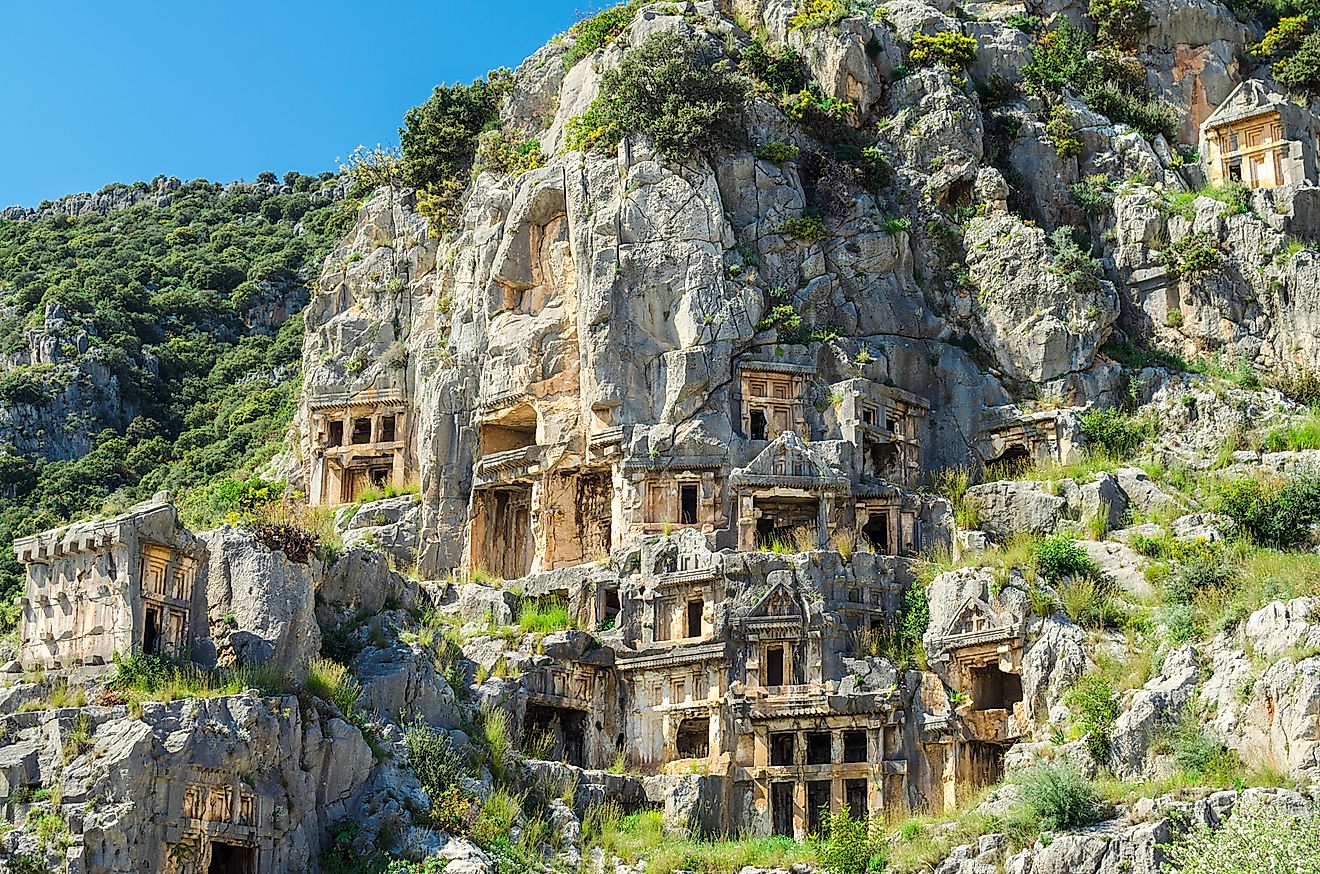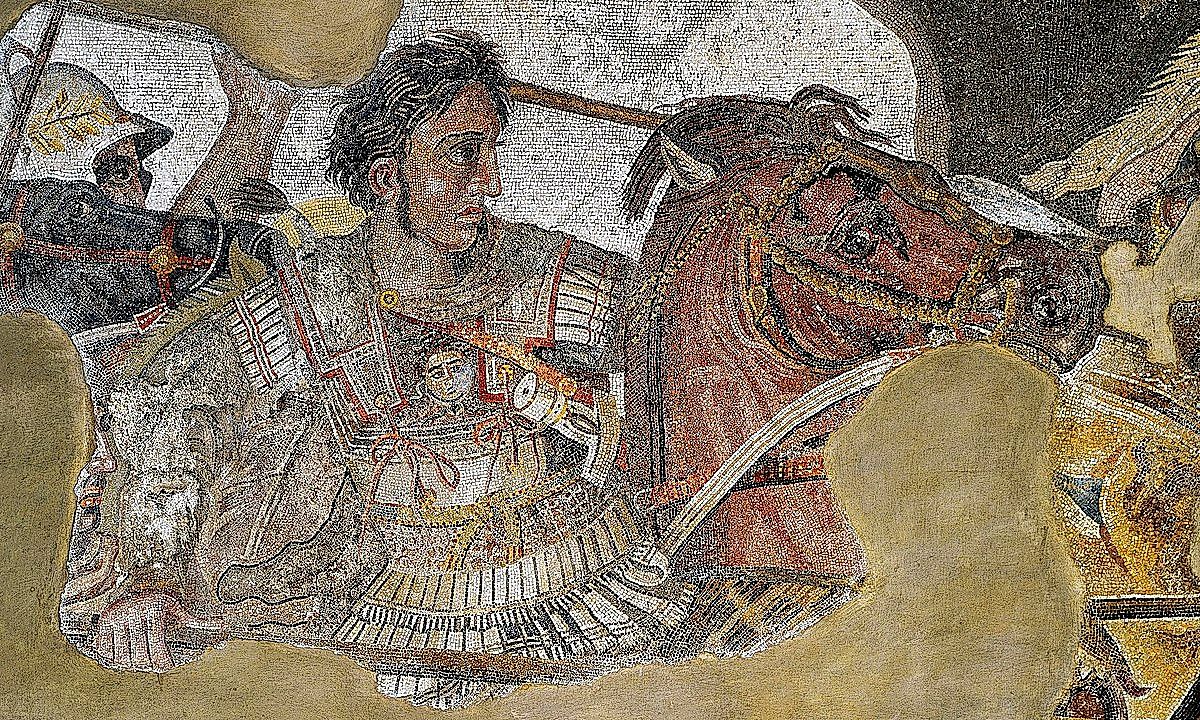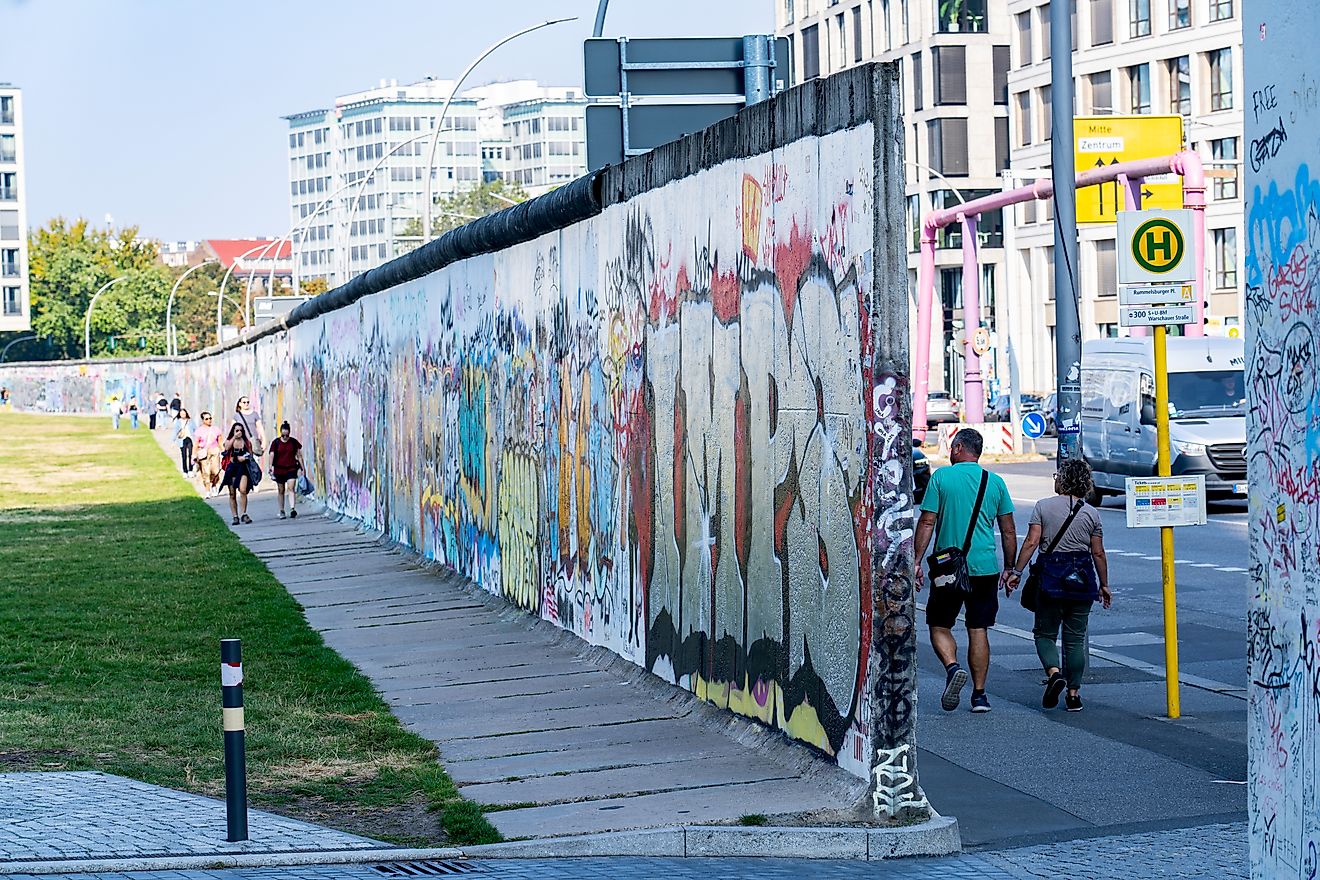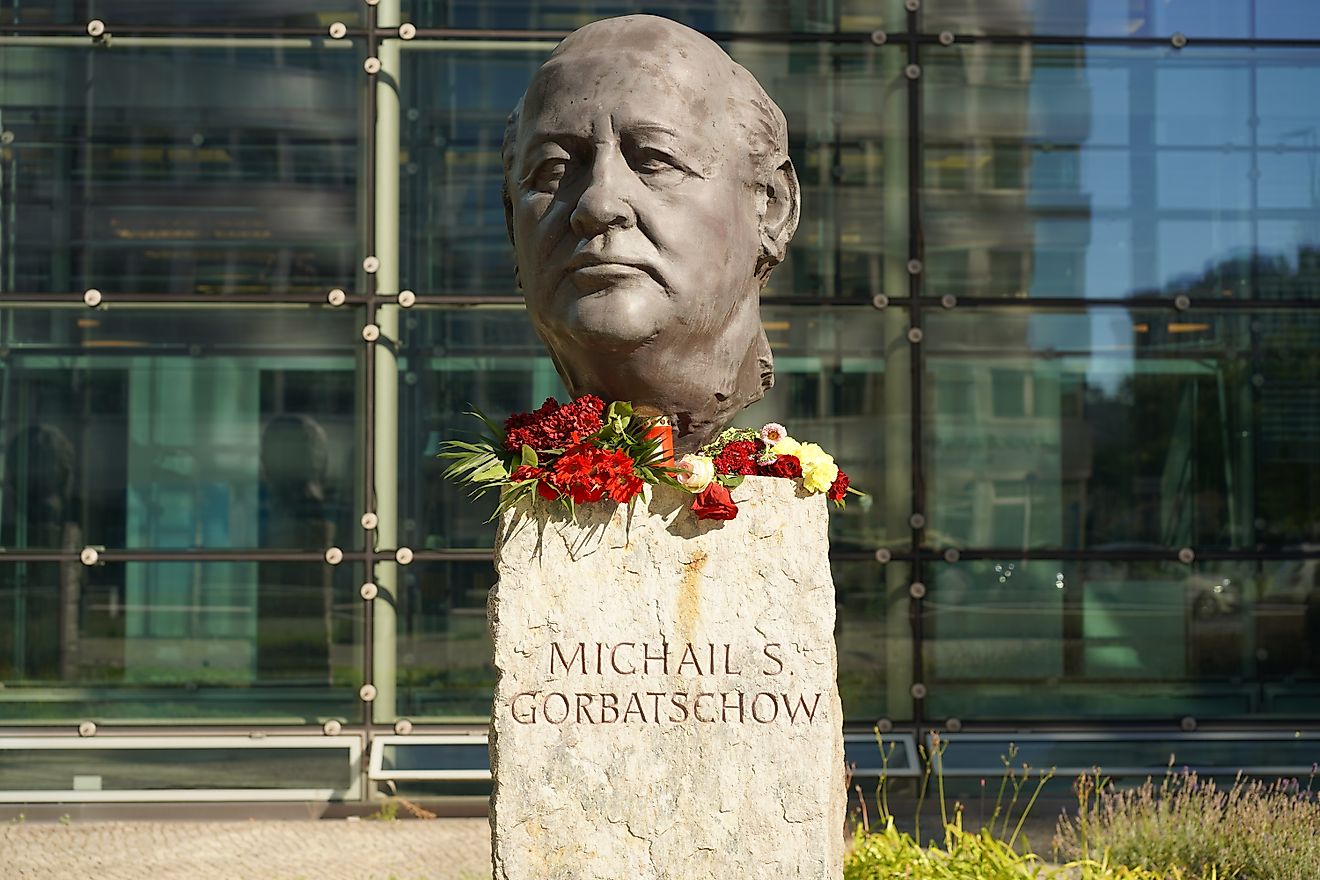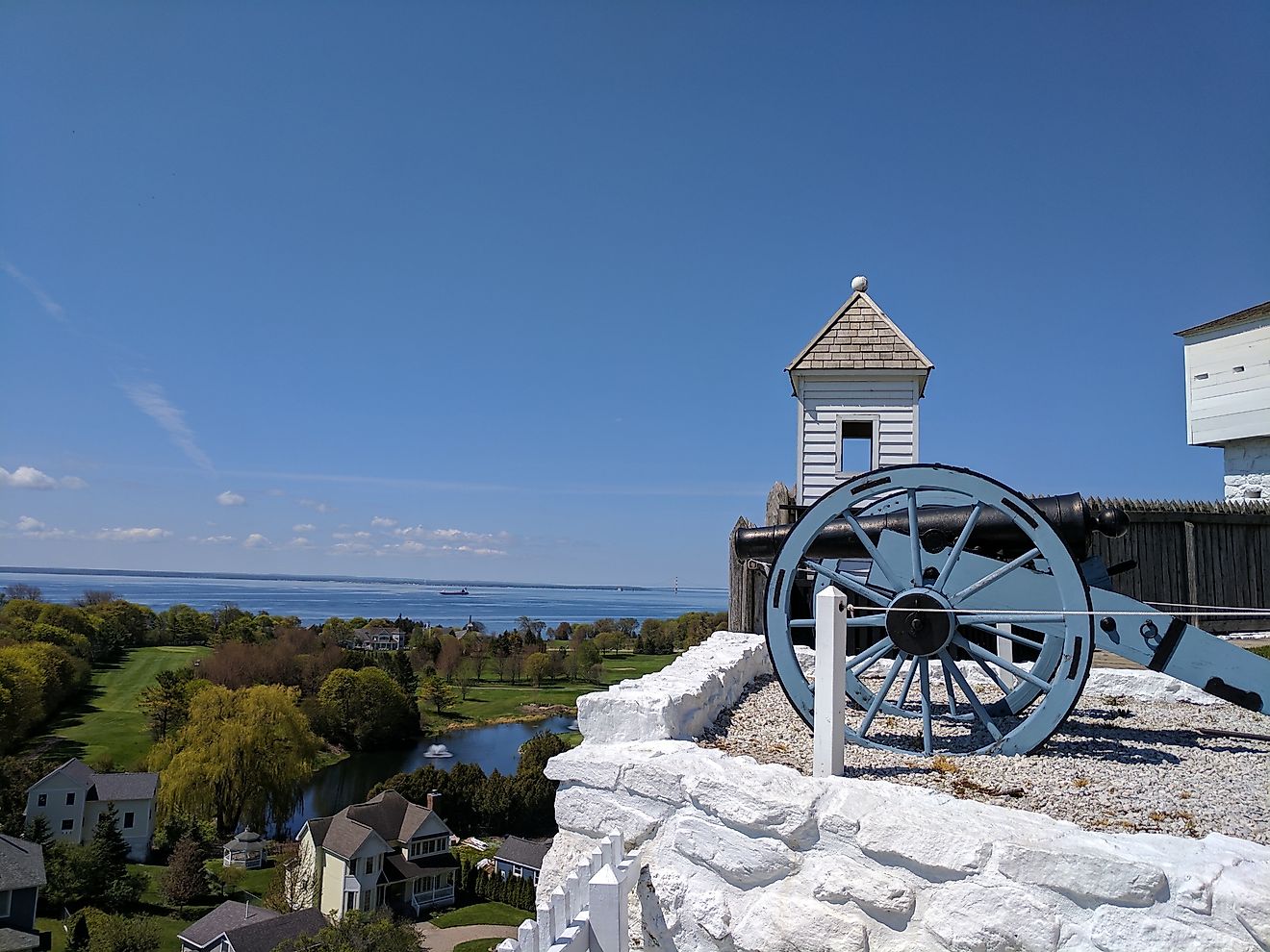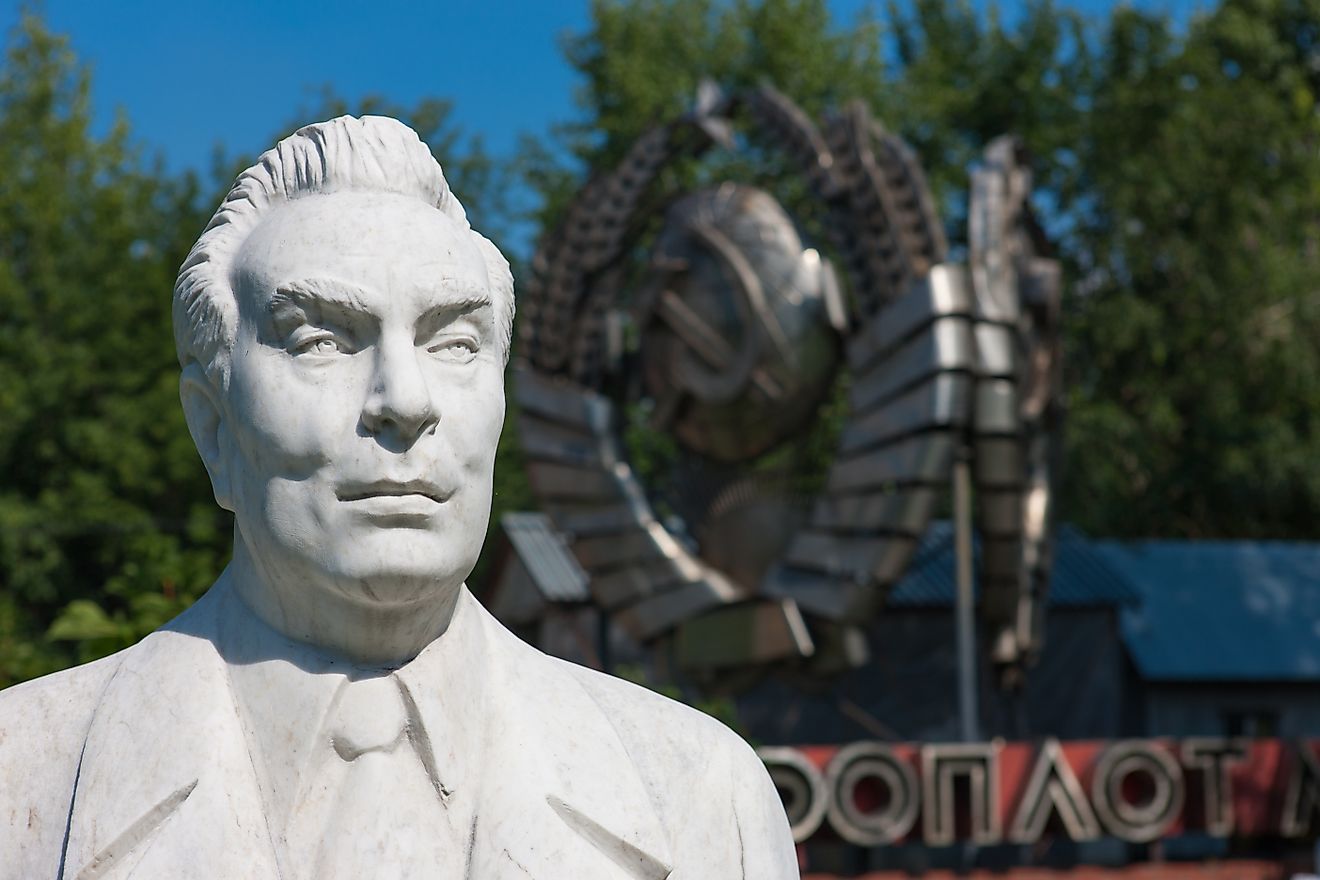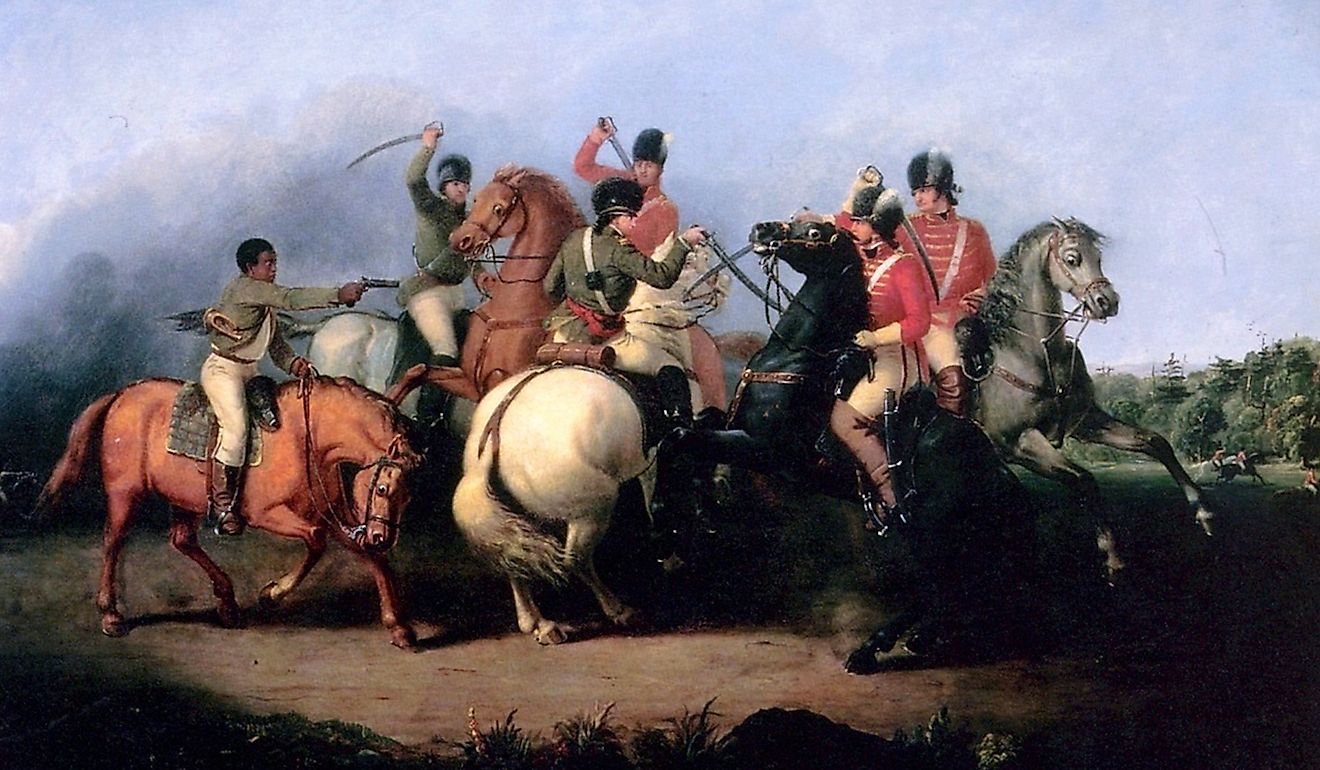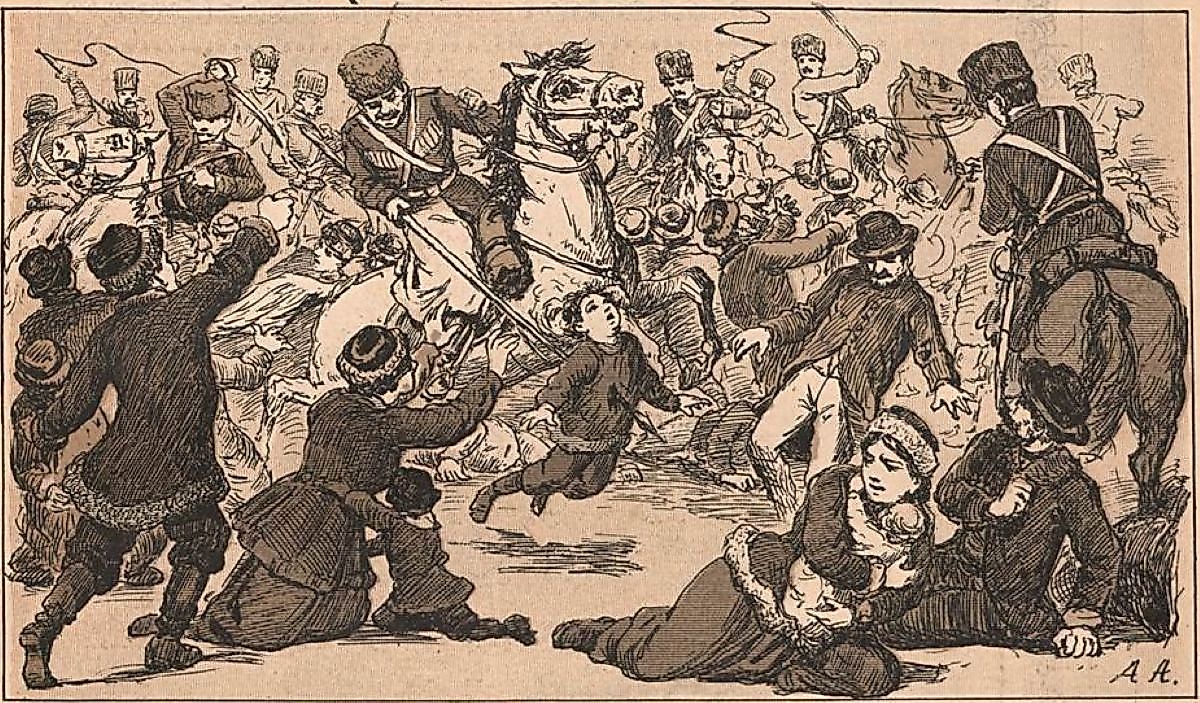
What Was Bloody Sunday?
The culmination of decades of discontent in Russia, Sunday, January 22nd, 1905, known as Bloody Sunday, was arguably the first fatal blow to Tsar Nicholas II's grip on power. Indeed, the shooting of unarmed protesters by soldiers and the imperial guard killed the myth of the "good Tsar". Furthermore, the massacre precipitated the 1905 Russian Revolution, the first of three revolutions throughout the 1900s and 1910s that ultimately led to the end of the monarchy.
Historical Context
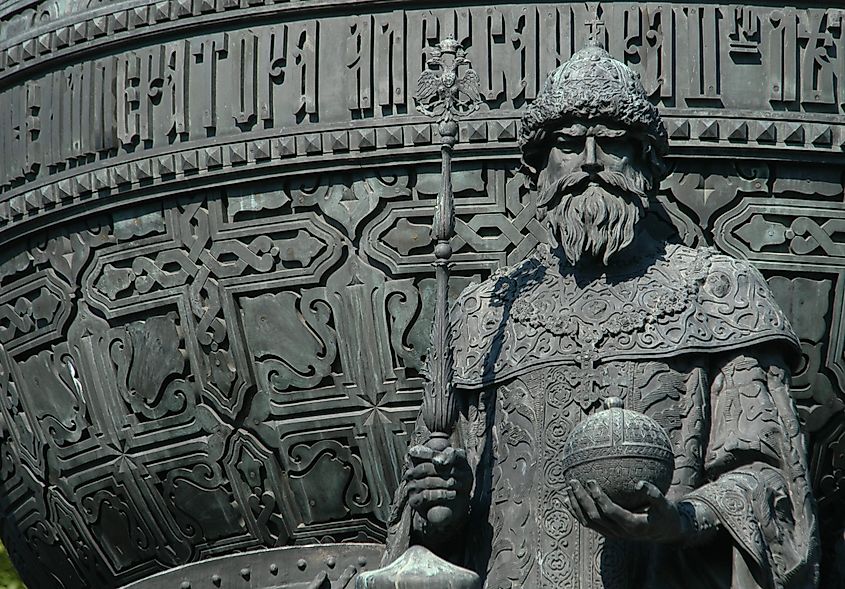
The decades leading up to Bloody Sunday were full of discontent. Poor conditions for the peasants in the countryside and the workers in the cities meant that the lower echelons of Russian society were unhappy. This unhappiness was exacerbated by weak leadership. Tsar Nicholas II, who became ruler of Russia in his mid-20s after the early death of his father, was ineffective, unprepared, and unwilling to listen to suggestions from members of the aristocracy who wanted to help the workers and the peasants. Thus, many turned to other solutions, including revolution. One way this revolutionary fervor was channeled was through Marxism, with three major Marxist parties, the Bolsheviks, the Mensheviks, and the Socialist Revolutionary Party, gaining popularity in the first years of the 20th century.
Eastern Expansion and the Russo-Japanese War

There were several more immediate causes of Bloody Sunday and the 1905 Revolution. The Russian Empire (generally) wanted peace while it, paradoxically, also pursued territorial expansion. China was weak in the late 19th and early 20th century, making the Far East a logical region to expand. But, Japan soon proved problematic. Nicholas II was racist, calling the Japanese "little yellow monkeys". He was also almost assassinated by a Japanese nationalist in 1891. All this meant that the Tsar did not negotiate terms of territorial expansion with Japanese leaders—a common practice for the great powers at the time. Instead, Nicholas II thought that a short, decisive war was necessary to stem the tides of revolution. However, on February 8th 1904, Japan launched a pre-emptive surprise attack on the Russian port of Port Arthur in Manchuria. The subsequent war was a disaster for Russia. The Russian troops were poorly trained and had low morale, contrasting the well-prepared Japanese army. Furthermore, as the war dragged on into 1905, the prices of everyday necessities rose, exacerbating the revolutionary fervor that Nicholas II had aimed to quell.
Bloody Sunday and the 1905 Revolution
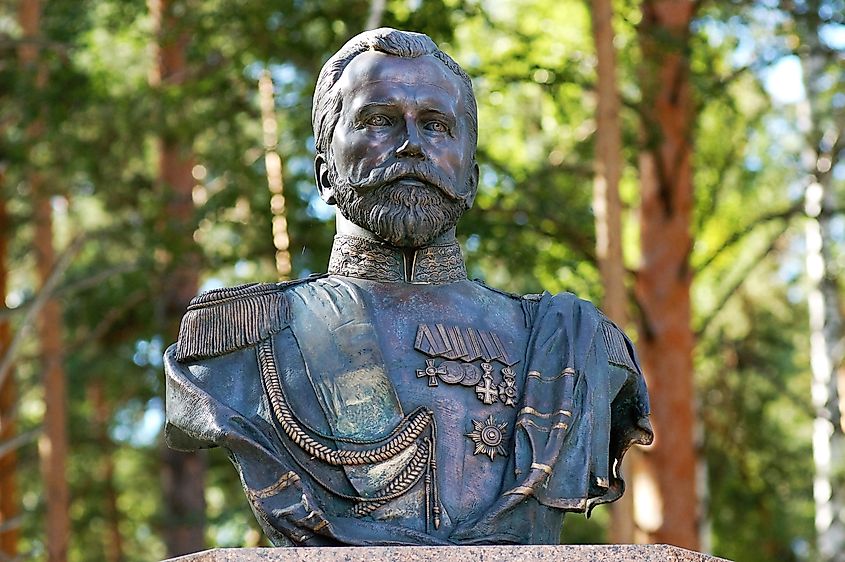
All these tensions came to a boiling point on January 22nd, 1905. On this day, a large group of peaceful protesters in St. Petersburg marched towards the Winter Palace, the home of the Tsar. Led by Father Georgy Gapon, they halted in a public square near the palace and demanded an end to the war, a separation of church and state, eight-hour workdays, and lower taxes. Nicholas II never heard the demands since he was not home, and thus his uncle, Vladimir, was tasked with dealing with the protesters. He ordered the troops protecting the palace to attack the crowd. Using rifles, swords, and pistols, the soldiers killed hundreds of people and injured thousands.
This marked the beginning of the 1905 Russian Revolution, with protests, strikes, and mutinies in response to the massacre quickly spreading across the country. In June 1905, sailors on the battleship Potemkin mutinied, influenced by the revolutionary fervor and discontent due to Russia's defeat at the Battle of Tsushima. The Bolsheviks, Mensheviks, and the Socialist Revolutionary Party also all experienced increased support during 1905. In the summer, Nicholas II allowed for the creation of an elected assembly. However, he said that it would have little real power, making it ineffective at quelling the tide of revolution. In August 1905, Russia ended its war with Japan, giving up Port Arthur in the process. This too did not stop the revolution. Indeed, in October 1905, a railway strike halted the Russian economy, quickly becoming more organized with the formation of a council known as the St. Petersburg Soviet (Soviet roughly translates to "workers' council"). These Soviets soon emerged across the country.
With the situation spiraling out of control, Nicholas II finally listened to the protesters' demands. On October 30th, 1905, he issued the October Manifesto. This quasi-constitution guaranteed key civil liberties, including freedom of assembly and an end to prior censorship. Thus the protesters dispersed. In November, many of the Soviets dissolved and some of their leaders were arrested. Although revolutionary activities continued in the countryside until 1907, Nicholas II largely regained control of the key centers of power by the end of 1905.
Aftermath
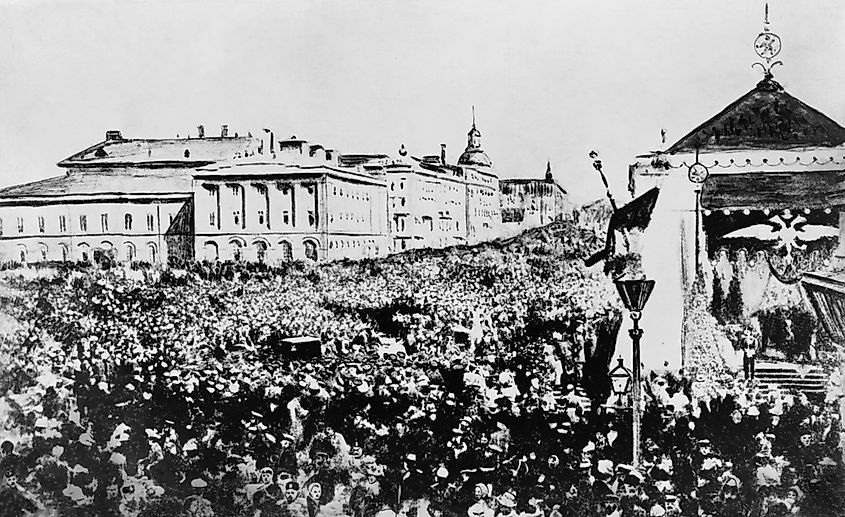
The aftermath of the 1905 revolution saw the creation of the Duma, an elected legislative and advisory body that provided some checks to the Tsar's power. Regardless, while a genuine democratic achievement, the Duma was flawed. The peasants, 80 to 90 percent of the Russian population, could only elect 22 percent of the representatives, and the urban working class could only elect three percent. On the other hand, the elites elected the remaining 75 percent. Furthermore, the Duma was the lower chamber in a two-chamber system, with the upper chamber being even more elite-controlled. Cabinet ministers were also still chosen by the Tsar. Finally, the Tsar could dissolve the Duma at any time and rule by decree, further undermining its authority. All this meant that while the 1905 revolution was a major step towards a more representative government, many remained unsatisfied.
Bloody Sunday was a monumental event in Russian history. The culmination of years of frustration, the massacre precipitated the 1905 revolution. This revolution brought about significant democratic reforms, however, they were insufficient in quelling the long-term revolutionary fervor.

